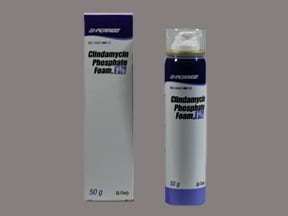

Affected patients have a greater risk of ingrown toenails and multiple periungual pyogenic granulomas (discussed below). Nail thinning and fragility may present as lamellar onychoschizia, in which the nail’s upper layers detach, or as elkonyxis, in which the nail loses substance and becomes soft or pitted.
#Clindamycin side effects on skin series#
A series of thin bands (called Mees’ lines) reveals arsenic poisoning. When drug related, it usually occurs in all nails simultaneously as 1- to 2-mm horizontal bands. 1,6 In most cases, it’s the result of a minor injury. True leukonychia is the most common color abnormality of the nail, and it can present as spots, lines, or incomplete to total nail whitening. Leukonychia, also called milk spots, occurs when drugs affect keratinization.1,3,4 Onychomadesis-nail shedding or splitting-is an extreme degree of Beau’s lines. Human fingernails typically grow at about 0.1 mm/day (toenails grow at half that rate) as nails grow, Beau’s lines move upward and are eventually snipped off. A common side effect of chemotherapy and radiation, multiple Beau’s lines will develop with repeated chemotherapy cycles between treatment cycles, the nails return to normal. 3 Usually, Beau’s lines appear on all 20 nails within weeks of starting treatment. The depth of the depression reflects the amount of damage, and the depression length increases as drug exposure increases. Beau’s lines-grooved, side-to-side (horizontal) depressions in the nail surface-most often occur if a drug decreases keratinocyte cell division in the proximal nail fold.

The Online Table 1-25 describes drugs associated with these alterations. 1 Let’s look at 10 types of drug-induced nail changes. Topical exposure to drugs can cause dyschromias and irritant or allergic contact dermatitis. Certain medications change digital perfusion, leading to necrosis or blood vessel damage. Drug-induced changes may accumulate in, and discolor, the nail or surrounding skin. Most drug-induced nail changes occur when a drug affects the nail epithelia, but drugs can also affect the nail matrix, the nail bed, or the periungual tissue. Drug-induced nail changes can perplex even expert dermatologists, however. The nail has several parts (Figure 1,2), and a working familiarity with nail “vocabulary” can help pharmacists identify specific nail changes.


 0 kommentar(er)
0 kommentar(er)
